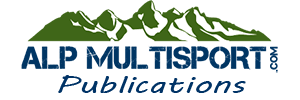Training phases are the building blocks of your training plan. As you lay out a periodized training plan, you will organize the plan across several phases. Each phase has a different training focus.
The training phases are not distributed equally across the training plan; each phase, with its own focus, will be spread across a different number of weeks:
- Training phases that focus on lower intensity work will be longer.
- Training phases that focus on higher intensity work will be shorter.
Following the principle of specificity, you will set up your training plan to move from the least specific physiology to most specific physiology for your racing activity and distance. So the way you organize the training phases will depend on your goals, as well as your background and prior training up to the start of your training plan.
Before discussing different ways to put these training phases together, the next lessons discuss each of the training phases below in more detail:
- Aerobic Base Conditioning. This is the starting point for those new to endurance training (with less than four years of training), as well as experienced endurance athletes who may be coming off an extended break from training (such as a long break due to injury or several weeks of inactivity between seasons). Aerobic base conditioning prepares your body for more rigorous training.
- Endurance Training. This is quintessential “base training” where you focus on building mileage — or volume. Endurance training targets both extensive endurance and intensive endurance as you increase the duration of your long runs or workout sessions.
- Lactate Threshold Training. Lactate threshold training focuses on higher-end aerobic work approaching — and sometimes just crossing over — your lactate threshold (LT). As an endurance athlete, you want to be able to stay aerobic at higher levels of effort. Lactate threshold training helps to improve your lactate tolerance and decrease lactate accumulation, which allows you to stay aerobic at faster speeds.
- VO2max Training. VO2max training involves higher-intensity anaerobic work. Now you are working beyond your lactate threshold to increase the maximal rate of oxygen transport (aerobic capacity or VO2max), build lactate tolerance, and increase anaerobic endurance.
- Peak & Taper. Once the bulk of the training has been done, it’s time to taper and sharpen for your key event.
- Transition. The transition phase is just what it sounds like. It’s a transition period between seasons. After that A-priority event at the end of your season, you’ll want to take some days off, followed by some easy recovery weeks of light activity. Then ease back into some unstructured training, maybe trying out different endurance activities from the ones you typically train and race. The point is to refresh your mind and body while maintaining your aerobic base conditioning. After all, aren’t you doing this because you enjoy living a healthy, active lifestyle?
Each training phase focuses on one or more key workout types. Key workouts for each training phase are illustrated in the lessons that follow. But you can also find a summary of all workout types in the Alp Fitness workout library.
Note that in addition to the key workout or workouts associated with each training phase, recovery and endurance workouts are also used throughout all training phases.



